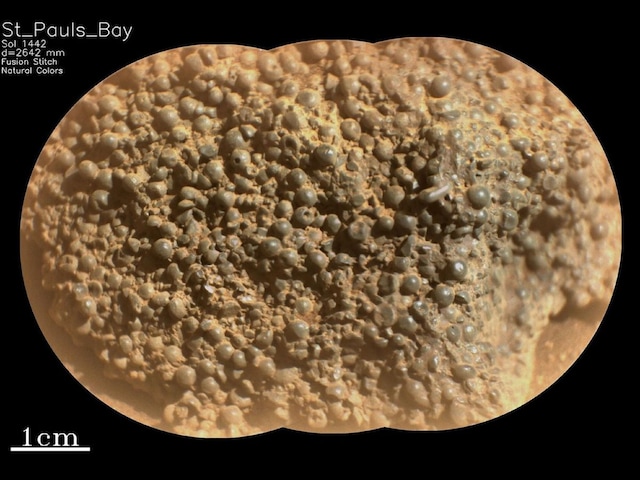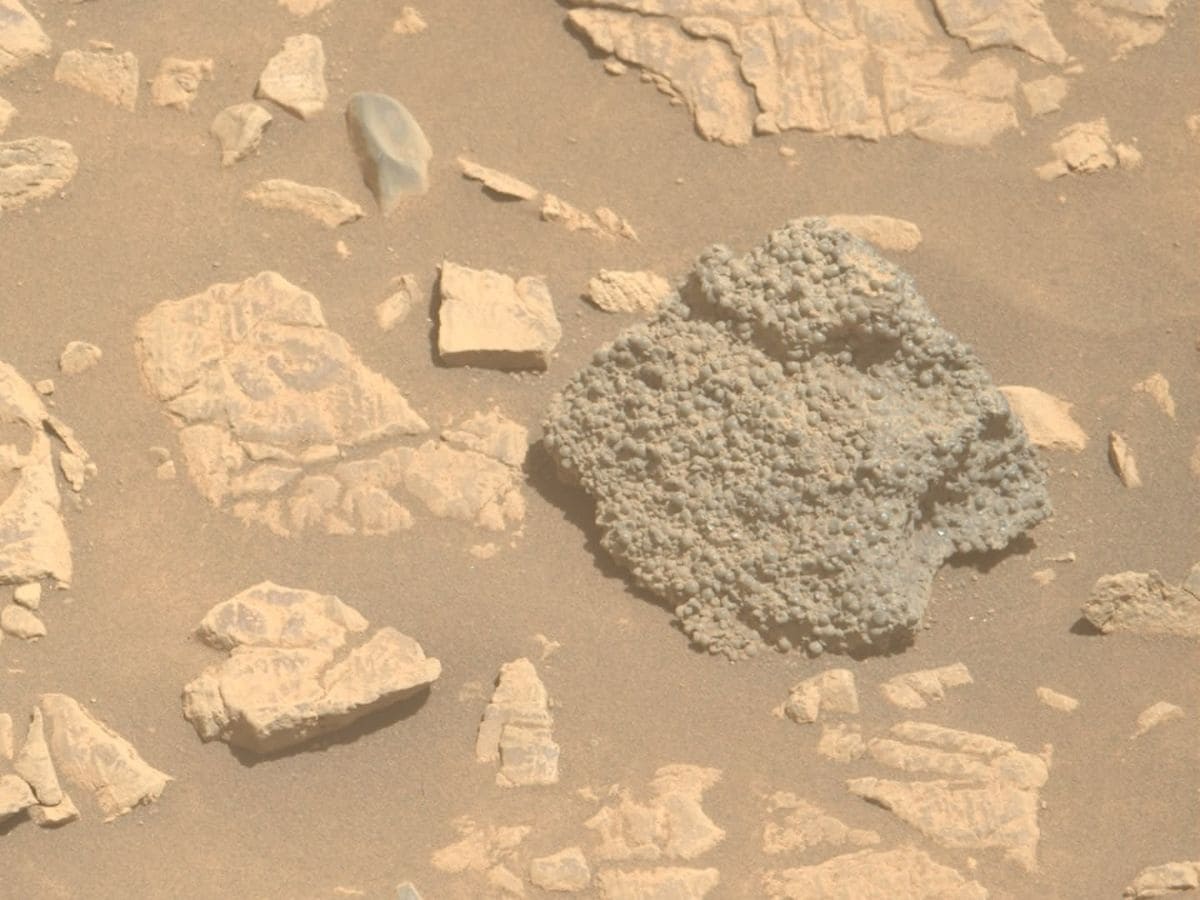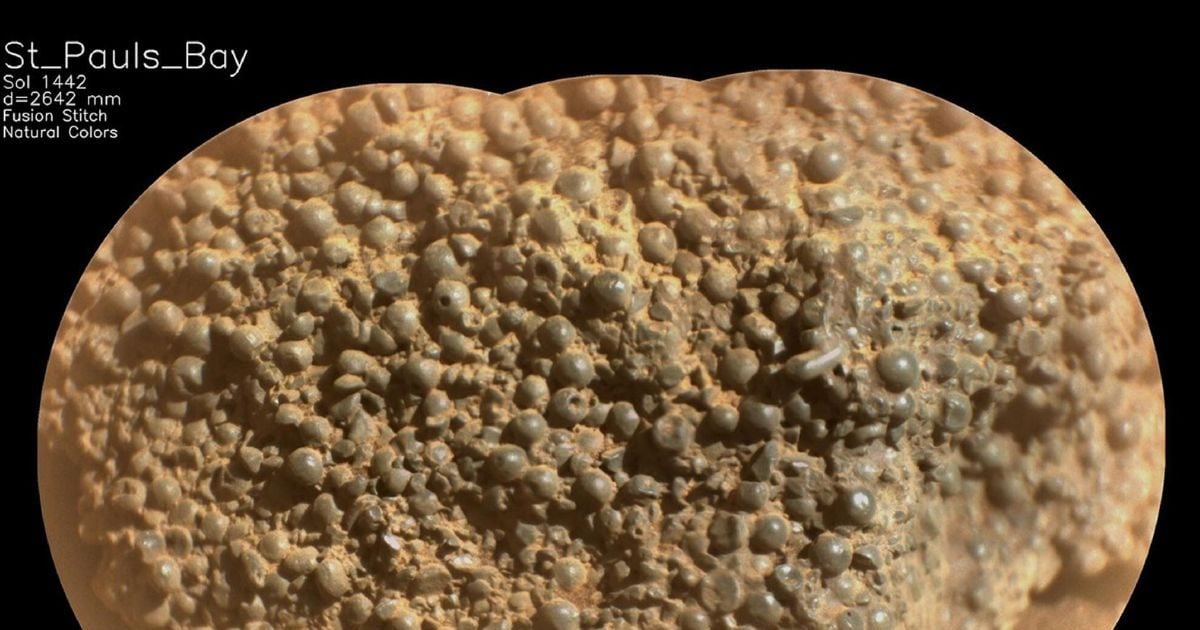technology
bizarre news, Gejero crater, ghostly news, hatke news, Jezero Crater, Life on Mars, Mars geological, Mars Geology, Mars Mysteries, mystery, Mystery of Mars, Nasa, NASA Parasiviere Rover, Nasa Perseverance Rover, Omg news, Perseverance Rover, Spider Eggs Rock, Spider on mars, St pauls bay, Strange news, Uneartly story, Weird News
mohitmittal55555@gmail.com
0 Comments
NASA’s Parasiviere Rover discovers strange stone on Mars, scientist surprised
Contents
NASA’s Parasiviere Rover saw such a mysterious thing on Mars, which scientists are also surprised to see. Seeing this, it seemed that a lot of spider eggs were lying. But the experts call it a spider -like stone …Read moreScientists are also surprised to see the picture taken by NASA’s Parasivains Rover.
Last updated:
NASA’s Parasiviere Rover saw such a mysterious thing on Mars, which scientists are also surprised to see. Seeing this, it seemed that a lot of spider eggs were lying. But the experts call it a spider -like stone …Read more

NASA says that it must have been formed by collision of a meteorite.
The box of the mysteries of Mars has opened once again and this time NASA’s Personality Rover saw something that scientists were blown away. On the slope of Jazero Crater’s Witch Hazel Hill, the rover looked at the shape of a spider of a spider. They did not understand how to reach these eggs? However, after watching carefully, it was revealed that these are strange stones, which looks like a bunch of hundreds of spider eggs. The light layer of red sand is frozen on this stone and it looks completely different from the things around it. NASA’s team has named it “St. Pauls Bay”, but its texture and presence has confused everyone. According to NASA, it is a “float rock”, that is, where it was found, it was not built there. This means that this stone came here from elsewhere, but how and where, it is still a mystery, which has shaken everyone.
The essential signs required to understand its strange texture are missing. Scientists say that this stone moves away from its original place and its journey can highlight the geological story of Mars. Was it made of meteorite collision? NASA estimates that perhaps a meteorite made the rocks of Mars steam, which got cold and turned into small grains. If this is the case, then these stones must have come from far away from their birthplace and can tell how the meteorite on Mars takes the ingredients around. Another theory is that this stone has come down from Hazel Hill. NASA has seen from space that there are some dark layers on this hill. If St. Pauls Bay comes from any of these layers, then it can tell scientists what those layers are made of. Are they ashes of volcanoes? Are there traces of old meteorite? Or was there ground water here? If the chemical makeup of this stone comes from these layers, then a new page of the history of Mars can open.

Scientists are also surprised to see the picture taken by NASA’s Parasivains Rover.
Please tell that this stone tells the story of the changing face of Mars. Its texture and even its journey shows the complex game of water, rocks and geological powers. This is a big question for scientists, was there any life on Mars? If groundwater was ever present on the Witch Hazel Hill, fossils of microorganisms can be found in the samples deposited. NASA’s Mars Sample Return Mission, which has been planned in the 2030s, will bring these samples to the earth, where they will be studied deeply. There are gold mines for stone scientists like St. Pauls Bay. They not only help in understanding the past of Mars, but also explains why this red planet is like today. Is this stone made of meteorite? Is this a volcanic remnant? Or is there evidence of water presence? Every answer brings the mysteries of Mars one more step. This discovery of Parasiviere has become a topic of discussion on social media, and people are surprised to see this strange stone.
Share this content:














Post Comment